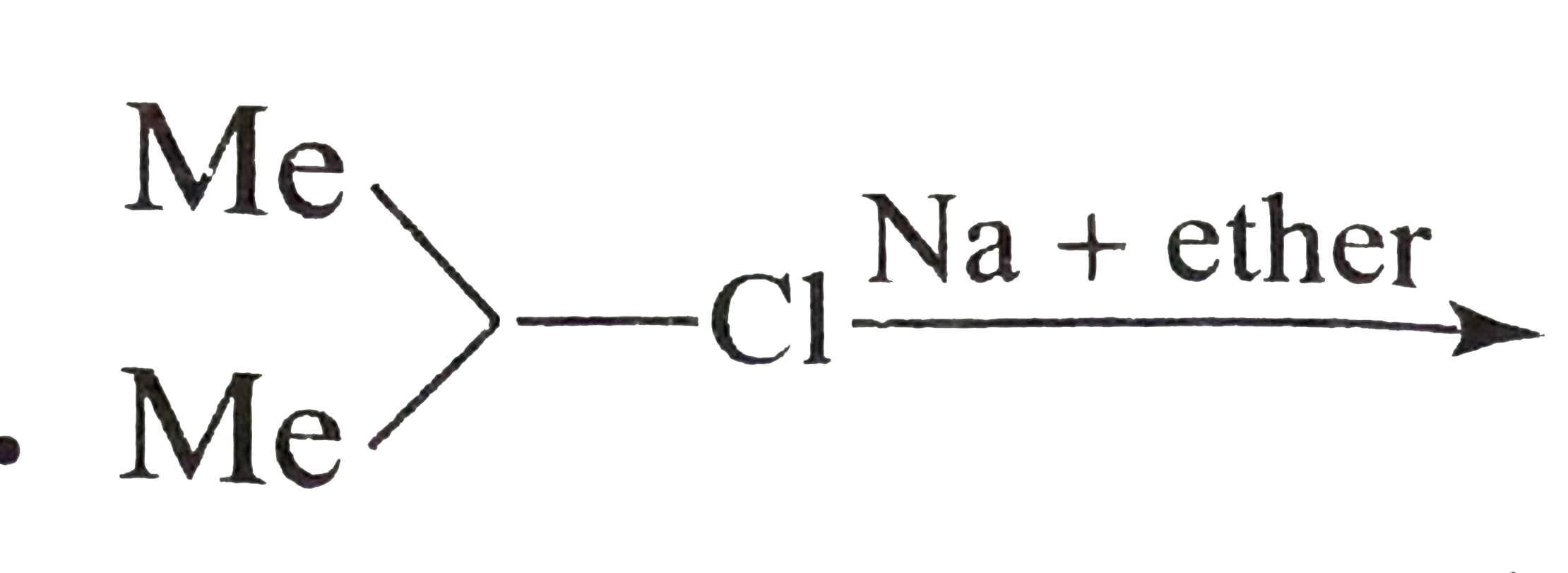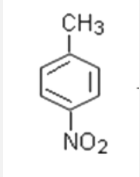In the following sequence of reactions, the products (A) to (G) are formed:
i. 2CH4(g)Δ−−−→1773K(A)(g)+B(g)
ii. 4molof(A)Δ−−−−−−−−−−→Ni(CN)4+THF(C)O3/oxid.−−−−−→(D)only
iii. (A)(1)1molofNaNH2−−−−−−−−−−−→(2)C2H5I(E)3molofE−−−−−−→RedhottubeF⏐↓O3/Red.(G)only
Compound (E) is
Propyne
Butyne
But-2-yne
none of these
The correct Answer is:B
To determine the product (E) in the given sequence of reactions, we will analyze each step systematically.
Step 1: Identify Product A
The first reaction is:
2CH4(g)Δ→(A)(g)+B(g)
When two molecules of methane (CH4) are heated at high temperature (1773 K), they undergo a process called pyrolysis or cracking, leading to the formation of ethyne (acetylene, C2H2) and hydrogen gas (H2). Thus, we can conclude:
- Product (A) is C2H2 (ethyne).
Step 2: Analyze the Second Reaction
The second reaction is:
4 mol of (A)Δ→Ni(CN)4+THF(C)O3//ox.→(D)
Here, 4 moles of ethyne (C2H2) are treated with a nickel complex in a tetrahydrofuran (THF) solvent. This typically leads to the formation of a compound that can undergo ozonolysis. However, since we are focused on finding product (E), we can skip the details of products (C) and (D) for now.
Step 3: Analyze the Third Reaction
The third reaction is:
(A)(1)1 mol of NaNH2→(2)C2H5I(E)3 mol of E→Red hot tube→(G) onlyF
We start with product (A), which is C2H2. When ethyne reacts with 1 mole of sodium amide (NaNH2), the acidic hydrogen of the terminal alkyne is deprotonated, forming a sodium acetylide intermediate:
HC≡C−Na+
Next, this intermediate reacts with ethyl iodide (C2H5I) in an SN2 reaction, where the nucleophile (acetylide ion) attacks the ethyl iodide, leading to the formation of:
HC≡C−C2H5
This compound is 1-butyne (or but-1-yne), which is our product (E).
Final Answer
Thus, the compound (E) is:
1-butyne (but-1-yne)
Summary
1. Product (A) is C2H2 (ethyne).
2. Product (E) is C4H6 (1-butyne).
The first reaction is:
2CH4(g)Δ→(A)(g)+B(g)
- Product (A) is C2H2 (ethyne).
The second reaction is:
4 mol of (A)Δ→Ni(CN)4+THF(C)O3//ox.→(D)
The third reaction is:
(A)(1)1 mol of NaNH2→(2)C2H5I(E)3 mol of E→Red hot tube→(G) onlyF
HC≡C−Na+
HC≡C−C2H5
This compound is 1-butyne (or but-1-yne), which is our product (E).
Thus, the compound (E) is:
1-butyne (but-1-yne)
1. Product (A) is C2H2 (ethyne).
2. Product (E) is C4H6 (1-butyne).
Topper's Solved these Questions
- ALKYNESBook:CENGAGE CHEMISTRY ENGLISHChapter:ALKYNESExercise:Exercises (Multiple Correct Answers Type)
Explore 25 Videos
- ALKYNESBook:CENGAGE CHEMISTRY ENGLISHChapter:ALKYNESExercise:Exercises (Single Correct Answers Type)
Explore 30 Videos
- ALKYNESBook:CENGAGE CHEMISTRY ENGLISHChapter:ALKYNESExercise:Exercises (Subjective Type)
Explore 31 Videos
- ALKENES AND ALKADIENESBook:CENGAGE CHEMISTRY ENGLISHChapter:ALKENES AND ALKADIENESExercise:Single correct Answer
Explore 14 Videos
- APPENDIX - INORGANIC VOLUME 1Book:CENGAGE CHEMISTRY ENGLISHChapter:APPENDIX - INORGANIC VOLUME 1Exercise:chapter-7 Single correct answer
Explore 1 Video
Similar Questions
In the following sequence of reactions, the products (A) to (G) are formed:
i. 2CH4(g)Δ−−−→1773K(A)(g)+B(g)
ii. 4molof(A)Δ−−−−−−−−−−→Ni(CN)4+THF(C)O3/oxid.−−−−−→(D)only
iii. (A)(1)1molofNaNH2−−−−−−−−−−−→(2)C2H5I(E)3molofE−−−−−−→RedhottubeF⏐↓O3/Red.(G)only
Compounds G is
View SolutionIn the following sequence of reactions, the products (A) to (G) are formed:
i. 2CH4(g)Δ−−−→1773K(A)(g)+B(g)
ii. 4molof(A)Δ−−−−−−−−−−→Ni(CN)4+THF(C)O3/oxid.−−−−−→(D)only
iii. (A)(1)1molofNaNH2−−−−−−−−−−−→(2)C2H5I(E)3molofE−−−−−−→RedhottubeF⏐↓O3/Red.(G)only
Compounds (A) and (B), respectively, are:
View Solution
Knowledge Check
 Br2−−→CCl4(i)alc. KOH−−−−−−−→(ii)NaNH2(A)major, Product (A) is :AH2C=CH−CH=CH2BCH3−C≡C−CH3CCH3−CH2−C≡CHDCH3−CH=C=CH2
Br2−−→CCl4(i)alc. KOH−−−−−−−→(ii)NaNH2(A)major, Product (A) is :AH2C=CH−CH=CH2BCH3−C≡C−CH3CCH3−CH2−C≡CHDCH3−CH=C=CH2H3C−CH3∣C∣CH3−H+CCl4R2O2−−→hvProduct :
AH3C−CH3∣C∣CH3−ClBCHCl3CBoth (a) and (b)DNone of these
In the following sequence of reaction, the product C is
CH3−BrKCN−−→AH2O+−−−→BLiAlH4−−−→EtherC
View Solution (B)2mol−−−−−−→Cl2+hv (C)2mol−−−−−−−−→Alc.KOH
(B)2mol−−−−−−→Cl2+hv (C)2mol−−−−−−−−→Alc.KOH
(D) CH2=CH2−−−−−−−→Δ (E)
The final product (E) is :
View SolutionConsider the following sequence of reactions
C2H5C≡CHCH3MgBr−−−−−→A(1)HCHO−−−−−−→(2)H2O+B
The product (B) is
View SolutionIn the following reaction sequence Y is,
PhOCOCH3AlCl3−−→Δ(X)I2−−−→NaOH(Y)
View SolutionIdentify the product (E) in the following sequence of reactions.
 Br2−−→ASn/HCl−−−−→BNaNO2/HCl−−−−−−−−−−→273−278KCH2O/H3PO2−−−−−−−→DKMnO4−−−−−−−→OH−E
Br2−−→ASn/HCl−−−−→BNaNO2/HCl−−−−−−−−−−→273−278KCH2O/H3PO2−−−−−−−→DKMnO4−−−−−−−→OH−E
View Solution(CH3)2CONaCN−−−→HCI(A)H+3O−−→Δ(B)
In the above sequence of reactions, (A) and (B) are :
View Solution